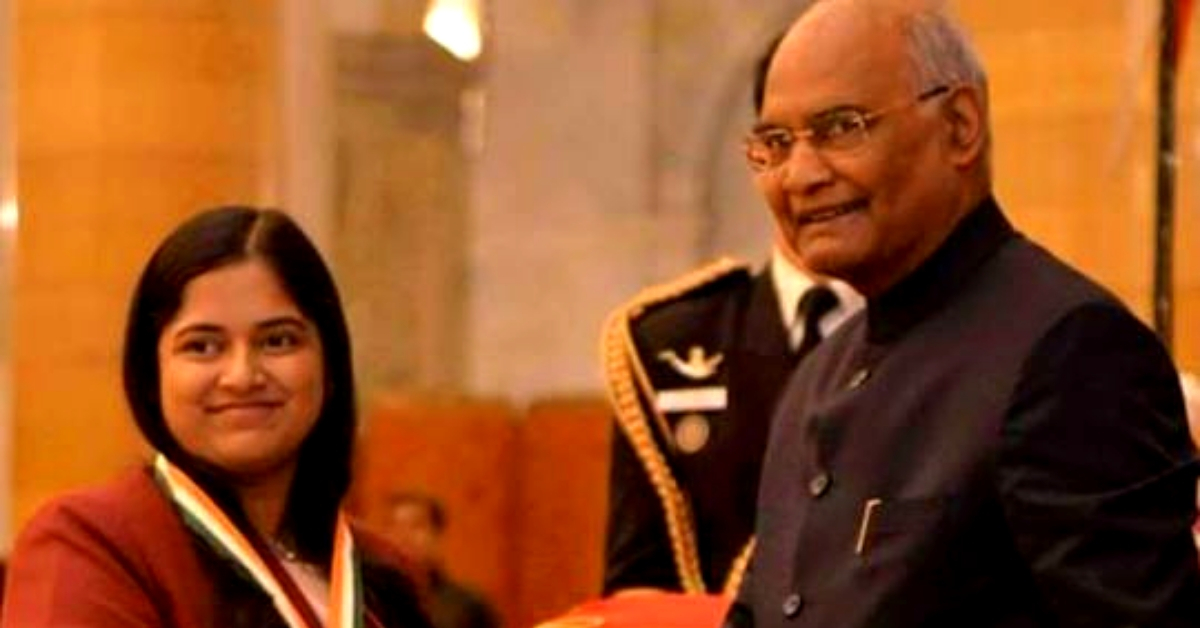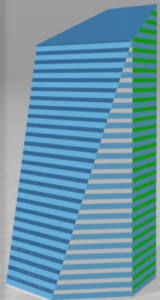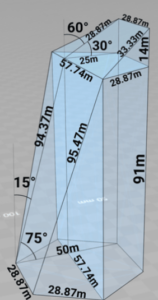From Hair to Home, Award-Winning Bengaluru Teen Has All the Right Inventions!
From using innovative eco-solutions to create prototypes of green skyscrapers in urban areas to micronutrient testing using a person’s hair, Arunima Sen is making ground-breaking research at both macro and micro levels.

Arunima Sen, a 17-year-old, is receiving recognition across the globe for all the right reasons. From using innovative eco-solutions to create prototypes of green skyscrapers in urban areas to micronutrient testing using a person’s hair, this Bengaluru innovator is conducting ground-breaking research at both the macro and micro levels.
Speaking to The Better India, Arunima said, “My mother is a single parent who works really hard to make ends meet. I also have an elder sibling who lives with autism. In 2017, my mother was battling with her life in the ICU after an attempt on her life. After the horrible incident, I took charge of everything—starting from taking my brother to his regular follow-ups to looking after my recovering mother, academics, and extra-curricular activities like research on the scope of STEM (Science, Technology, Engineering, and Mathematics).
Last year, she collaborated with like-minded students from Poland, Finland, and the USA to develop a device that non-invasively determines micronutrient levels in a person’s body.

Micronutrient testing is a type of blood test that measures minerals, vitamins, amino acids, fatty acids and antioxidants in a person’s white blood cells.
A study by the Indian National Science Academy reveals that over 50 per cent of women and children in India suffer from Iron Deficiency Anaemia and it is figures like these that make the need for micronutrient testing urgent.
And Arunima’s research in this field is attempting to do exactly that!
“The device we developed ensures cost-effectiveness as well as ease of modification. It is small and has a spectral response range of 320-1000 mm, a range that works for all micronutrients that our project is working with. It is designed to be used either via Bluetooth with a compatible phone or a tablet or with an integrated touchscreen display to allow use in the most varied conditions,” told Arunima.
A measurement of micronutrients can be accurately determined in a hair solution using a spectrophotometry device (an instrument that measures the amount of light absorbed by a sample) with an easy, accurate and inexpensive procedure to fulfil the needs of better data from South East Asia, Africa, and India, informed Arunima.
The medical research that Arunima was involved in will help patients in India on a micro level. But, she also has big green plans for the urban population—quite literally!

Bringing tomorrow’s living solutions on the ground today, Arunima collaborated with students from Bangladesh, India, Nepal, Norway, and Romania to develop a prototype for an energy efficient skyscraper.
Her ideas might be touching the skies, Arunima’s inspiration comes from her humble personal experiences.
“Coming from a neighbourhood in Bengaluru that faces electricity and water shortages on a day-to-day basis, I teamed up with students across the globe who faced similar problems in their communities and co-developed a prototype of a skyscraper that was seen to be significantly effective in terms of regular supplies of electricity and water generated using sustainable technologies. The building is planned for both residential and commercial use. It is planned to have a low carbon footprint on the environment and features all modern conveniences that enhance the well-being of occupants while merging nature and technology to promote a green lifestyle,” she tells TBI.
You may also like: Wondered What Happens to Used Cooking Oil? Here’s How It May Soon Fuel a Plane!
We asked her the details of what the building is intended to include and how it will lower its carbon footprint.
Explaining its features briefly, the innovator said, “It integrates the following sustainable technologies: grey water recycling, solar energy harnessing, rainwater collecting, green walls and integrated systems for close monitoring and distribution of energy and resources. We submitted this project to an international innovation challenge called the United Technologies Future of Buildings Challenge sponsored by United Technologies Corporation (UTC) and were the grand winner. The system is scalable and can be adapted to many different skyscrapers and buildings. It is relatively low cost. However, the system does not have a high efficiency for buildings with a small number of stories. The system is rather targeting a niche market.”
Designed to be green:



1. The exterior walls of the skyscraper are tilted at a 75-degree angle so that they optimize the surface area exposed to direct sunlight. The east and west facing walls are to have solar panels that generate electricity for the building.
2. In addition to this, a network of north-south facing walls will be natural air-purifiers. According to the New York Academy of Sciences, the skyscraper is set to have a collection of vines, leaf twines and climbers on a grid that runs down the building.
3. These plants will be watered by a rainwater harvesting system that collects water on the roof and distributes it through drip irrigation. The innovators have planned the water system in such a way that it saves thousands of litres of water every year.
4. “According to water consumption offered by the Water Research Agency, our system can save 62,000 litres of water, recycle 121,000 litres, and reduce cost by Rs. 20,000 per annum per household and save 12.435,100 litres of water, recycle 24,207,000 litres, and reduce cost by Rs. 40,02,875 for a residential site. Through the implementation of our grey-water recycling system, we are able to see 32.68 per cent water savings, a 63.62 per cent grey-water recycling rate, and a cost reduction of 42.17 per cent,” Arunima told TBI.
5. It is not just the exterior that the team has focused on.
Rather, sensors inside the walls are developed to detect the occupancy, temperature, humidity, light intensity and air quality to manage the use of solar power.

An all-round green project like Arunima’s is a wonderful example in sustainable urban living. The occupants of the skyscraper will still have to take green measures to reduce the use of non-renewable, non-biodegradable materials in their lives.
You may also like: Exclusive: This 16-YO Odisha Boy’s Life-Saving Innovation Can Protect Lakhs From Cancer!
This year, Arunima received the Rashtriya Bal Puraskar for her innovations. But this isn’t the first time that her innovations are getting acknowledged as promising. “My team and I recently won the Infosys Science Foundation Nutrition Challenge wherein we developed a novel data-driven intervention model to combat malnutrition in India. This year, I was one of the five Indians to attend the prestigious Yale Young Global Scholars program, a prestigious academic enrichment program for high school students, at Yale University, a top-tier Ivy League institution in the USA. I attended the Applied Science and Engineering session with a near-full scholarship. I was also selected as one of the only 40 students from across the globe to attend a highly selective summer program in Physics at Perimeter Institute for Theoretical Physics, Waterloo, Canada with a full scholarship,” she tells us proudly.
“Life hasn’t been easy for me,” adds Arunima, “but I try to take the positive aspects from all experiences and improve myself as a person.”
We can all take lessons from Arunima on prioritising our life and working for the things that truly matter.
(Edited by Saiqua Sultan)
All images courtesy of Arunima Sen.
Like this story? Or have something to share? Write to us: [email protected], or connect with us on Facebook and Twitter.
If you found our stories insightful, informative, or even just enjoyable, we invite you to consider making a voluntary payment to support the work we do at The Better India. Your contribution helps us continue producing quality content that educates, inspires, and drives positive change.
Choose one of the payment options below for your contribution-
By paying for the stories you value, you directly contribute to sustaining our efforts focused on making a difference in the world. Together, let’s ensure that impactful stories continue to be told and shared, enriching lives and communities alike.
Thank you for your support. Here are some frequently asked questions you might find helpful to know why you are contributing?


This story made me
-
97
-
121
-
89
-
167











